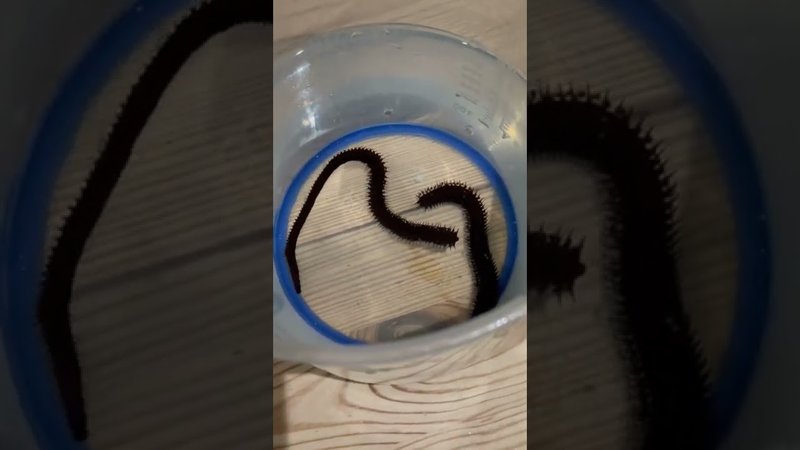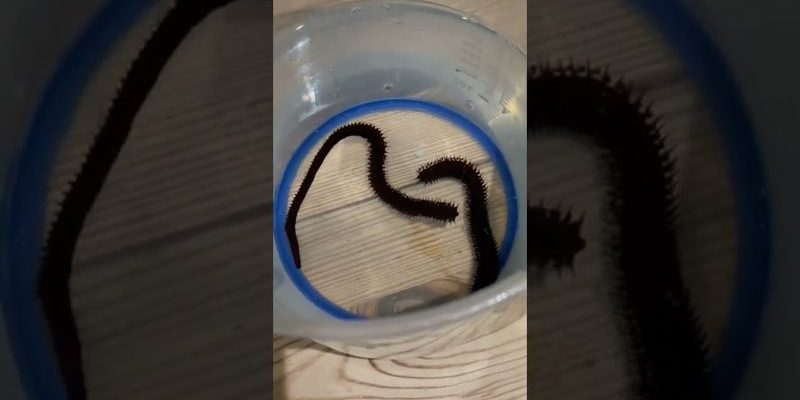
Think of the Bobbit worm as the hidden spy of the ocean floor—it can be both fascinating and a bit alarming. These worms can go unnoticed at first, but if you’re not careful, they can wreak havoc on your fish and other livestock. Detecting them before they become a problem is crucial, especially in a newly established tank. We’ll go step by step to help you identify these elusive critters, so you can keep your aquarium thriving.
What Are Bobbit Worms?
Bobbit worms, known scientifically as *Eunice aphroditois*, are fascinating creatures that can grow quite long—some up to 10 feet! They are mostly found in tropical and subtropical waters, but they can sometimes hitch a ride into your aquarium. These worms are named after the infamous Lorena Bobbitt, thanks to their impressive ability to snatch up prey with lightning speed. It’s this predatory nature that makes them a concern for aquarium owners.
In terms of appearance, Bobbit worms have a distinct look. They typically boast a thick, segmented body, often displaying vibrant colors like green or brown. Their heads are adorned with feathery appendages that they use for sensing their environment and catching food. Because they can bury themselves in the substrate, they often stay hidden, making detection tricky.
You might be thinking, “Why should I worry about these worms?” Here’s the thing: while they might seem harmless at first glance, they can become a threat to smaller fish and invertebrates in your tank. If you’re not careful, your peaceful aquarium can turn into a feeding frenzy, with your prized fish as the prey.
Signs of Bobbit Worms in Your Aquarium
Detecting Bobbit worms can feel like a game of hide-and-seek. They’re clever at staying out of sight, but here are some signs to watch for:
- Prey Disappearance: If your fish or invertebrates suddenly go missing, it could be a sign that a Bobbit worm is on the prowl.
- Burrows in Substrate: Look for small holes or tunnels in the sand or gravel. These are telltale signs that a worm might be living beneath.
- Feather-like Structures: If you see feathery appendages sticking out from the substrate, there’s a good chance a Bobbit worm is nearby.
Here’s a realistic example: Let’s say you set up your aquarium and stocked it with a few small clownfish. After a week, you notice that one clownfish has vanished. You might initially chalk it up to it being shy. But if you see small holes in the substrate and the remaining fish seem skittish, it’s worth investigating.
One important thing to remember is that Bobbit worms can be particularly active at night. If you have a **nighttime light** for your tank, consider checking it out after dark. You might just spot a curious worm peeking out!
How to Inspect Your Aquarium for Bobbit Worms
To effectively inspect for Bobbit worms, you’ll want to take a few systematic steps. Here’s a simple guide to help you through the process:
1. **Turn Off the Lights:** Start by turning off the lights in your aquarium. This mimics night conditions and encourages the worms to come out.
2. **Use a Flashlight:** Carefully shine a flashlight on the substrate. Look for any movement or the feathery structures that might indicate a worm.
3. **Stir the Substrate:** If you’re still unsure, gently use a small stick or aquarium tool to stir the top layer of the substrate. If a Bobbit worm is present, it may emerge or retreat quickly.
4. **Check for Missing Livestock:** Keep track of any missing fish or invertebrates. If several are gone, it’s a good idea to investigate further.
By following these steps, you’ll have a thorough way of checking for Bobbit worms. This method not only helps you detect if they’re lurking but also gives you a chance to watch your aquarium more closely.
Preventing Bobbit Worms from Invading Your Aquarium
Prevention is always better than cure, especially when it comes to unwelcome guests like Bobbit worms. Here are some proactive steps you can take:
- Use Quarantine Tanks: Always quarantine new additions to your aquarium. This way, you can ensure they’re not bringing in any unwanted pests.
- Inspect Live Rock: If you’re using live rock, check it thoroughly before adding it to your tank. Look for holes or any signs of creatures hiding within.
- Buy from Reputable Sources: Stick to trusted retailers or suppliers to minimize the risk of introducing Bobbit worms.
Honestly, the last thing you want is to find Bobbit worms after you’ve gone through the effort of setting up your aquarium. By being vigilant and taking these preventive measures, you can create a safe environment for your aquatic life.
Dealing with Bobbit Worms Once Detected
If you do find Bobbit worms in your aquarium, don’t panic! There are ways to handle the situation. Here are a couple of methods you can consider:
1. **Manual Removal:** If you see a worm, you might be able to remove it manually. Use tweezers or a similar tool to gently pull it out, but be cautious, as they can bite.
2. **Trap Them:** You can create a simple trap using a small piece of fish or shrimp. Place it in the tank and watch to see if the worm takes the bait. Once it’s out, you can move it to a different location.
3. **Consider Professional Help:** If the situation becomes overwhelming, don’t hesitate to reach out to a professional aquarium service. They know exactly how to handle various pests, including Bobbit worms.
You might be wondering about the fate of your aquarium. The key is to act fast and stay observant. By keeping a close eye on your tank’s inhabitants, you can maintain a peaceful aquatic home.
The Importance of Regular Aquarium Maintenance
Keeping your aquarium healthy goes beyond just detecting Bobbit worms. Regular maintenance is essential for ensuring that all your fish and plants thrive. Here’s what you can do:
- Regular Water Testing: Test your water parameters frequently to ensure they are optimal for your aquatic life.
- Frequent Water Changes: Change 10-20% of the water weekly to keep it clean and fresh.
- Monitor Fish Behavior: Pay attention to how your fish interact. Any changes could signal underlying issues.
By being proactive with maintenance, you can create a balanced ecosystem that reduces the chances of pests like Bobbit worms taking root in the first place. Your aquarium will flourish, and you’ll enjoy watching your fish thrive in a well-cared-for environment.
Detecting and managing Bobbit worms can seem daunting, but with the right knowledge and proactive strategies, you can keep your new aquarium safe and enjoyable. Regular inspections, careful monitoring, and solid maintenance practices go a long way in ensuring a healthy habitat for your fish and plants.
So, as you sip that coffee and enjoy your aquatic journey, remember that vigilance is key. By staying informed and taking action when necessary, you can create a beautiful underwater paradise that’s free from unwanted guests like Bobbit worms. Happy fishkeeping!

